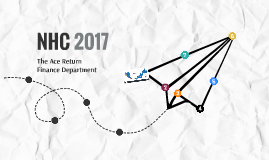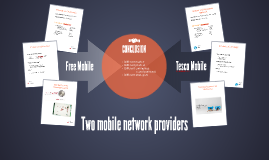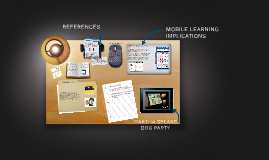Mobile Learning Template
Transcript: HISTORY & CURRENT TRENDS FOR K-12 INSTRUCTION & LEARNING MOBILE LEARNING Traditionally, students would receive instruction in the classroom setting, and would take textbooks home with assignments to enforce the lessons learned at school. However, the art of education has certainly evolved over the years, and this evolution has a direct correlation with the emergence of new technologies. Students everywhere can access courses and information from mobile technology. All that is required is an internet connection to make their learning mobile. As technology continues to improve, so will our education system and methods. HISTORY & CURRENT TRENDS - The internet first began with just a small group of people sharing information until Web 2.0. - Web 2.0 made the growth of mobile learning possible. - Adobe Flash was the most popular application for creating personal animations, games, video streaming, etc. before the explosion of smartphones/tablets and mobile learning. - Adobe Flash's incompatibility with mobile technology left an opening for HTML5, which is easier to use, better on battery life, and offers mobile streaming for videos. - Another huge impact of mobile learning is the increased number of applications running online classroom pages for students and teachers. - These applications have made it possible for teachers, students, and parents to monitor grades, communicate outside of the classroom, and participate in an online community (e.g.: Blackboard). WHO HAS CONTRIBUTED? - Proloquo2Go is an app that brings natural-sounding text to speech voices and helps students to reach their full literacy potential. - This assistive technology app targets students with autism spectrum disorders and others who may have difficulty speaking or communicating. - Young children in lower grades can begin learning before they enter the classroom, or even learn to speak, thanks to several applications such as, Alphabet Fun and Endless Numbers. - Students in middle and secondary schools can use Google Earth, Quick Graph (plotting equations), and The Elements (periodic table) interactively in and outside the classroom. MARTHA SPEAKS DOG PARTY 1. Ahonen, T. (2001, October 13). Ahonen Bio. Retrieved from Tomi Ahonen: www.tomiahonen.com/biotomi.htm 2. Circle, F. (2013). Special Needs App Review - Friendship Circle. Retrieved from Friendship Circle: http://www.friendshipcircle.org/apps/browse/proloquo2go/ 3. Godwin-Jones, R. (2011, June). Emerging TechnologiesMobile Apps for Language Learning. Language Learning & Technology, 15(2), pp. 2-11. 4. Holland, J. (2014). Mobile Learning Apps: Evaluating Instructional Needs. Retrieved from IGI Global: http://www.igi-global.com/chapter/mobile-learning-apps/111711 5. Metcalf, D. (2015). David Metcalf, Ph.D. Retrieved from WMTC: http://www.medicaltourismcongress.com/speakers/david-metcalf-ph-d/ 6. Pappas, C. (2016, January 11). Mobile Learning: 6 Trends for 2016. Retrieved from eLearning industry: https://elearningindustry.com/6-mobile-learning-trends-for-2016 PROLOQUO2GO Utilizing Mobile Learning V.S. IMPLICATIONS FOR K-12 INSTRUCTION & LEARNING MOBILE LEARNING RESEARCHERS IN MOBILE LEARNING Textbooks are becoming more accessible to students through technology in and outside the classroom. ALPHABET FUN APP 7. Taylor, E. (2016). Top 10 eLearning Trends in K-12 Education. Retrieved from TeachHub.com: http://www.teachhub.com/top-10-elearning-trends-k-12-education 8. Walker, K., Winters, N., Beale, R., Jones, A., Issroff, K., Scanlon, E., . . . Hoppee, U. (2006). Big Issues in Mobile Learning. Retrieved from http://www.cin.ufpe.br/~mlearning/intranet/m-learning/Big%20Issues%20in%20Mobile%20Learning.pdf#page=5 9. Wiley, J. (2016). Mobile Learning Technologies for 21st Century Classrooms. Retrieved from Scholastic: http://www.scholastic.com/browse/article.jsp?id=3754742 - Dr. David Metcalf is the director of the Mixed Emerging Technology Integration Lab at UCF. He and his team are credited with creating “health solutions, simulations, games, eLearning, mobile and enterprise IT systems for Google, J&J, VA, the U.S. military, and UCF’s College of Medicine” (Metcalf, 2016). - Tomi Ahonen is a former Nokia executive who has published books. He is also known as the “father of several widely references industry concepts and theories, include the Hockey Sticks theory, Connected Age concept, Generation-C for Community, and the 7th Mass Media taxonomy. MOBILE LEARNING IMPLICATIONS REFERENCES

















